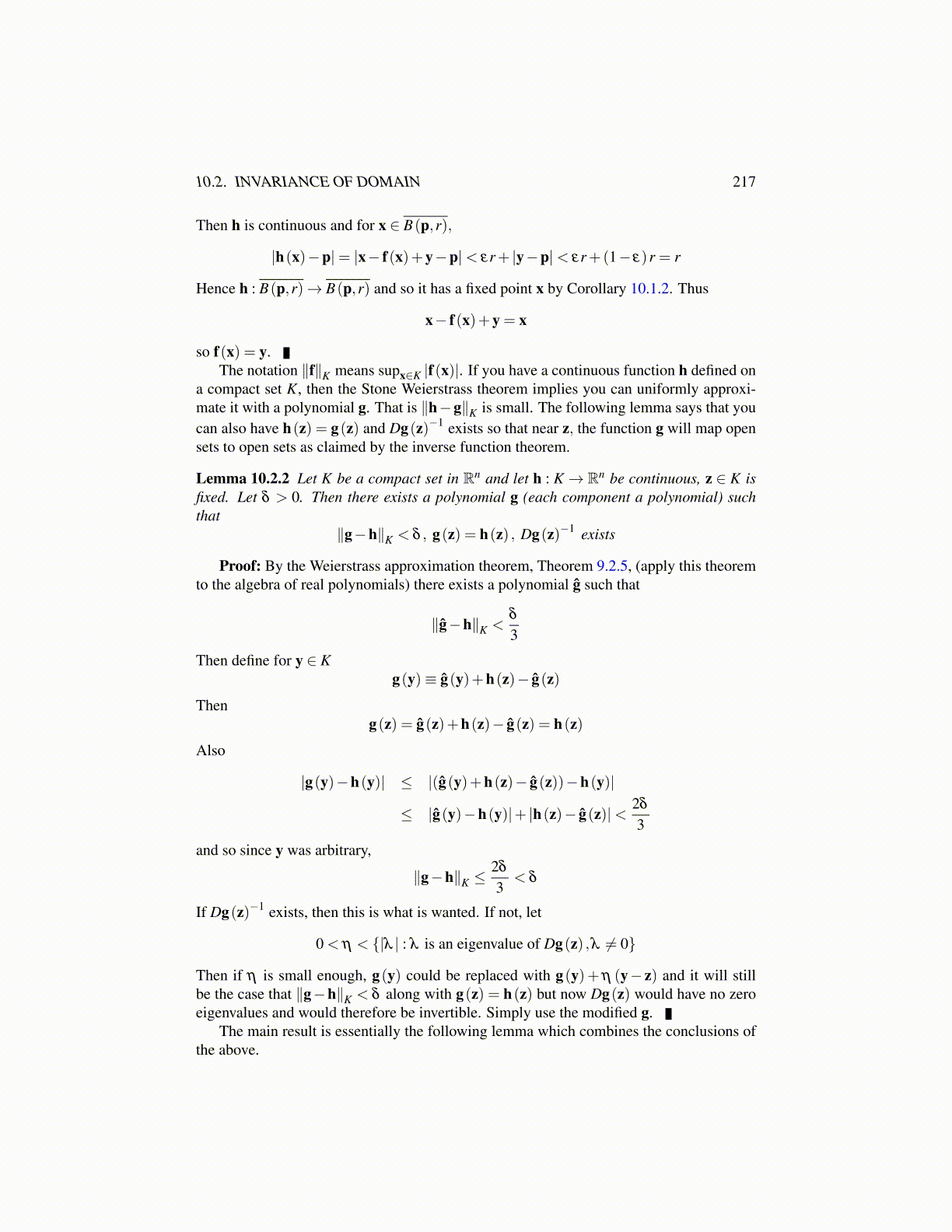
10.2. INVARIANCE OF DOMAIN 217
Then h is continuous and for x ∈ B(p,r),
|h(x)−p|= |x− f(x)+y−p|< εr+ |y−p|< εr+(1− ε)r = r
Hence h : B(p,r)→ B(p,r) and so it has a fixed point x by Corollary 10.1.2. Thus
x− f(x)+y = x
so f(x) = y.The notation ∥f∥K means supx∈K |f(x)|. If you have a continuous function h defined on
a compact set K, then the Stone Weierstrass theorem implies you can uniformly approxi-mate it with a polynomial g. That is ∥h−g∥K is small. The following lemma says that youcan also have h(z) = g(z) and Dg(z)−1 exists so that near z, the function g will map opensets to open sets as claimed by the inverse function theorem.
Lemma 10.2.2 Let K be a compact set in Rn and let h : K→ Rn be continuous, z ∈ K isfixed. Let δ > 0. Then there exists a polynomial g (each component a polynomial) suchthat
∥g−h∥K < δ , g(z) = h(z) , Dg(z)−1 exists
Proof: By the Weierstrass approximation theorem, Theorem 9.2.5, (apply this theoremto the algebra of real polynomials) there exists a polynomial ĝ such that
∥ĝ−h∥K <δ
3
Then define for y ∈ Kg(y)≡ ĝ(y)+h(z)− ĝ(z)
Theng(z) = ĝ(z)+h(z)− ĝ(z) = h(z)
Also
|g(y)−h(y)| ≤ |(ĝ(y)+h(z)− ĝ(z))−h(y)|
≤ |ĝ(y)−h(y)|+ |h(z)− ĝ(z)|< 2δ
3
and so since y was arbitrary,
∥g−h∥K ≤2δ
3< δ
If Dg(z)−1 exists, then this is what is wanted. If not, let
0 < η < {|λ | : λ is an eigenvalue of Dg(z) ,λ ̸= 0}
Then if η is small enough, g(y) could be replaced with g(y)+η (y− z) and it will stillbe the case that ∥g−h∥K < δ along with g(z) = h(z) but now Dg(z) would have no zeroeigenvalues and would therefore be invertible. Simply use the modified g.
The main result is essentially the following lemma which combines the conclusions ofthe above.